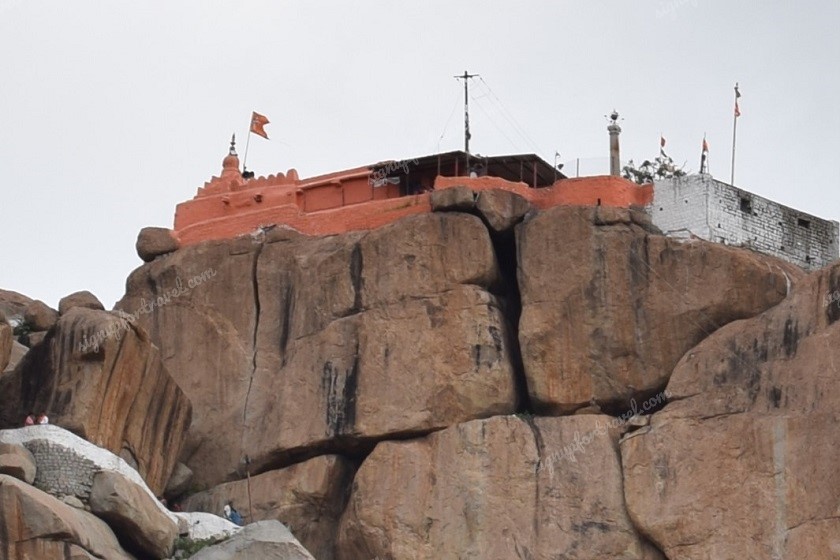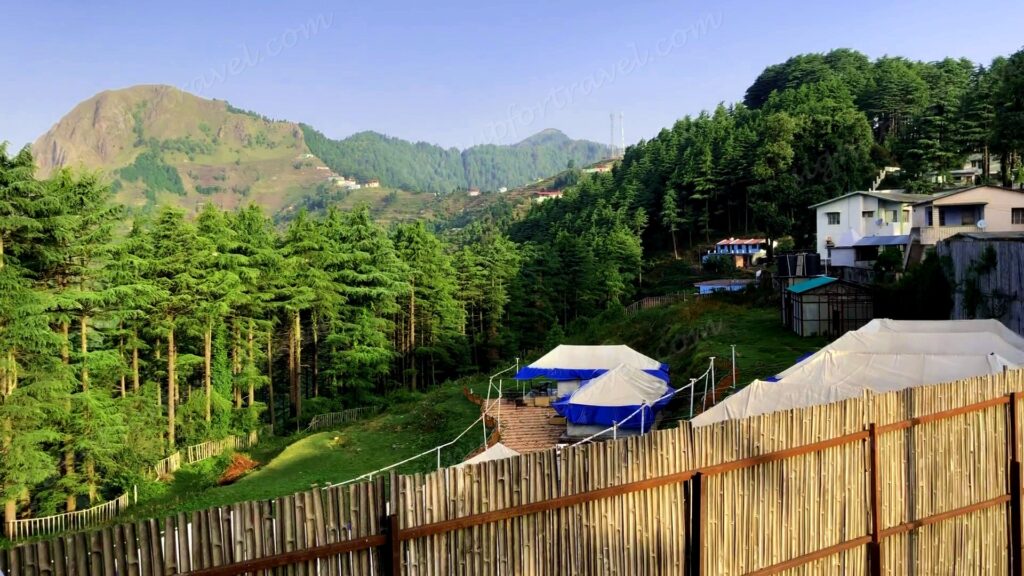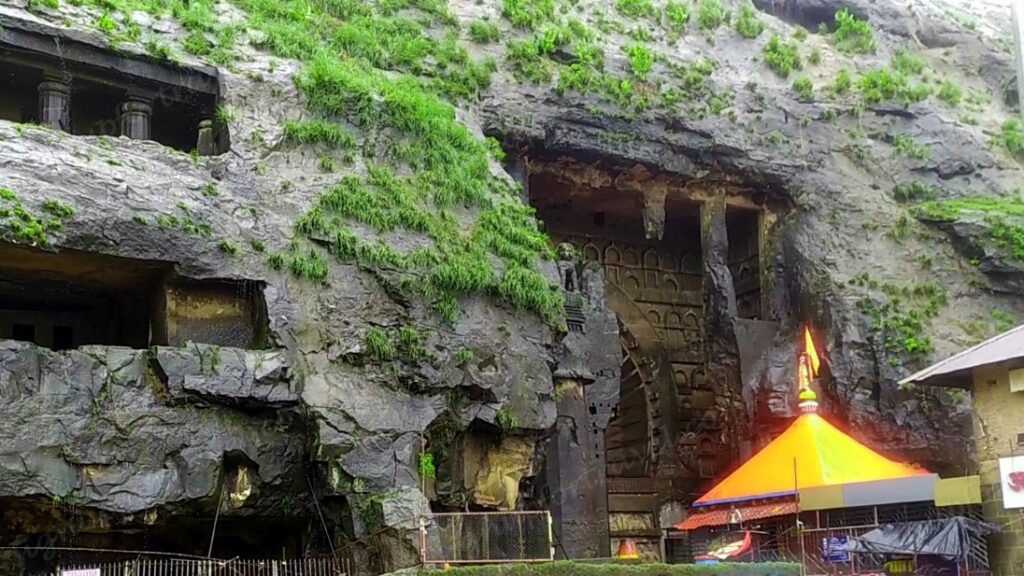Table of Contents
- Breakfast and plan for day
- Across the river
- Information before climb
- Anjanadri hills – The climb and at the top
- Sanapur lake
- Sanapur waterfall (or not)
- Pampa Sarovar
- Durgadevi temple
- The no drama lunch
- Post lunch plan
- Queen’s bath
- Royal enclosure
- Hazara Rama temple
- Other places of note
- Closing Day 3
- Link to Day3 YouTube video
1. Breakfast and plan for the day
We got up as usual at around 8 AM and were ready for breakfast by 9 AM. We decided to play it safe and ordered the best dish available i.e., dosa (one masala and one plain) and a glass of buttermilk to get us started.
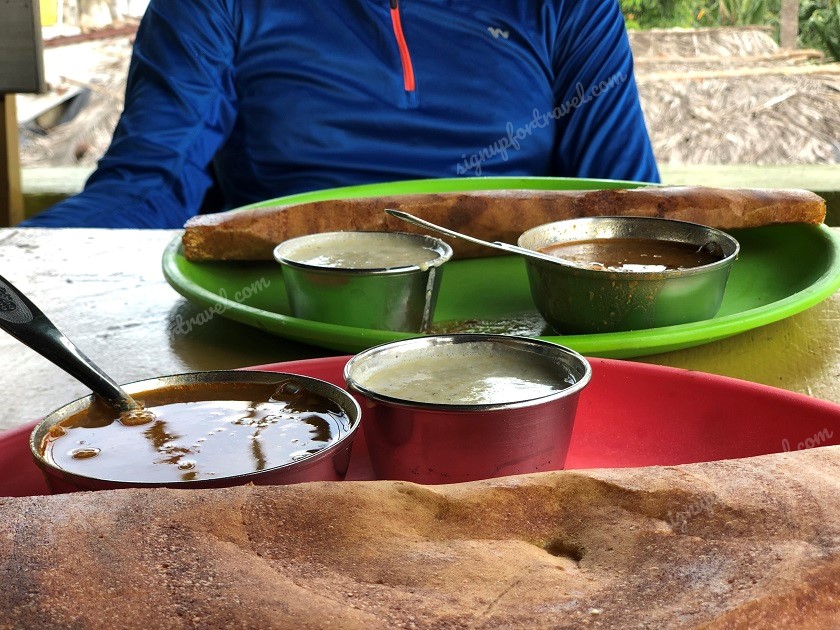
We quickly cleaned it up and started discussing the plan for the day. This was going to be our last day at Hampi so we had to make it count. Today was going to be about the places that were not exactly in Hampi, but rather the ones around it (yes, you read it right).
We had mentioned somewhere in the beginning that Hampi used to be the Kishkinda of Ramayana times, there is a very important place related to it. It was the Anjanadri hills or the birthplace of Hanuman. There were several other places nearby the hill, so the plan was to start by visiting the hill and then move from there.
2. Across the river
The distance from Hampi to this hill is roughly 24 km. We would have left by around 9.30 AM. Remember the Y-junction that we came across while going to the Vitthala temple, the road to the right goes to Anjanadri hill. We duly took that road to the right and after riding through some scenic landscape we reached a place called Bukkasagara. There is a temple as well with that name in the area though we did not have the time to explore. There is a road going to the left once we cross this village and this road takes us to the bridge over the Tungabhadra river. This bridge is also called the Bukkasagara bridge. This is quite a long bridge over the river and is a scenic enough place to click pictures.
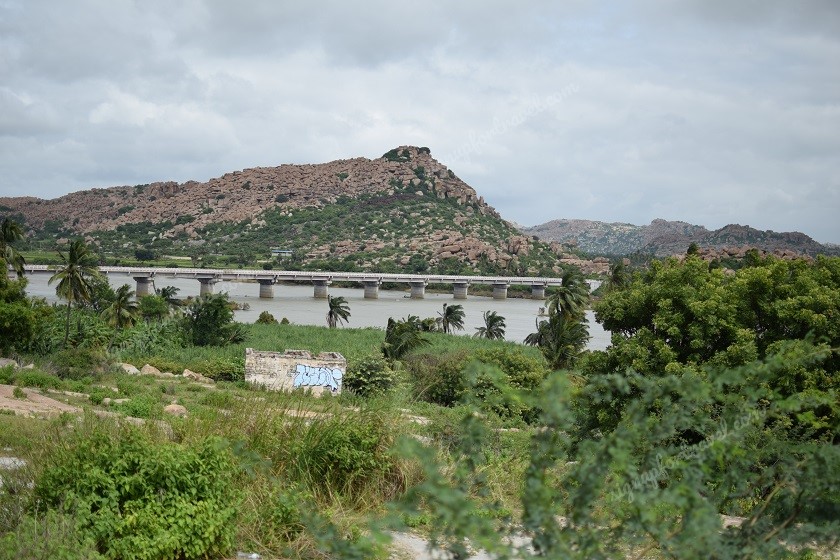
The next major place once we crossed the bridge was Anegondi. This place was the first capital of the Vijayanagara empire and has many monuments of note. Some of the important temples in this place include Sri Ranganatha, Sri Vishnu, Sri Lakshmi, Sr Durgadevi, Pampa Sarovar etc. Due to the lack of time, we could only visit a couple of them (more on that later).
As we moved along, beautiful paddy fields were accompanying us all through.
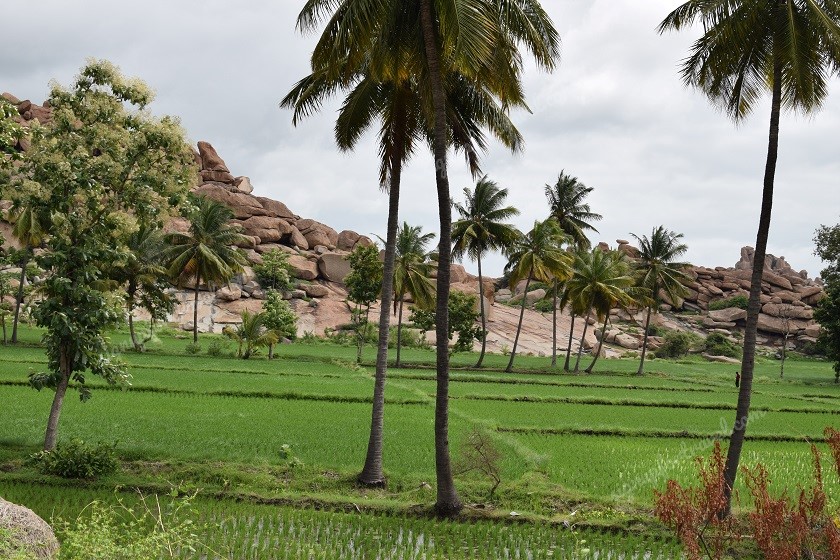
After that, we saw the first signboard of our destination that we were heading to, and we knew we were quite close now.
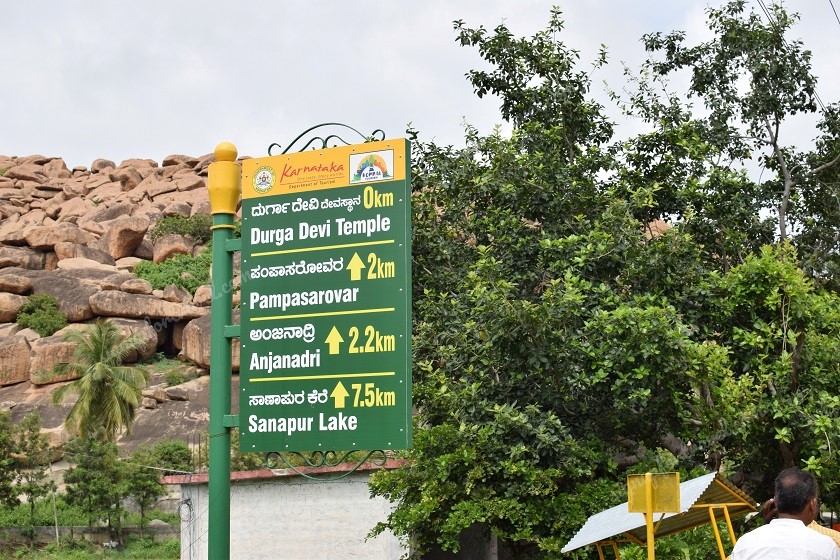
3. Some information before the climb
We finally reached the base of the hill at around 10.15 AM. There is a proper parking lot for the devotees who come to visit.
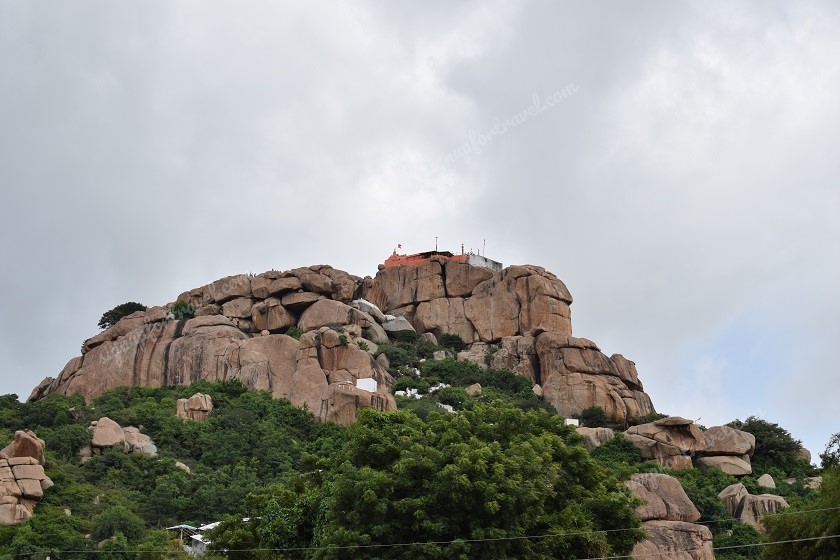
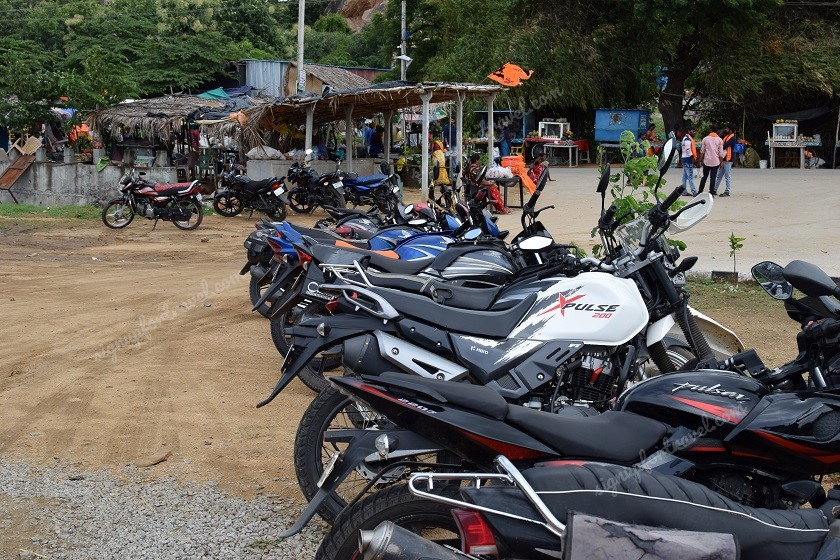
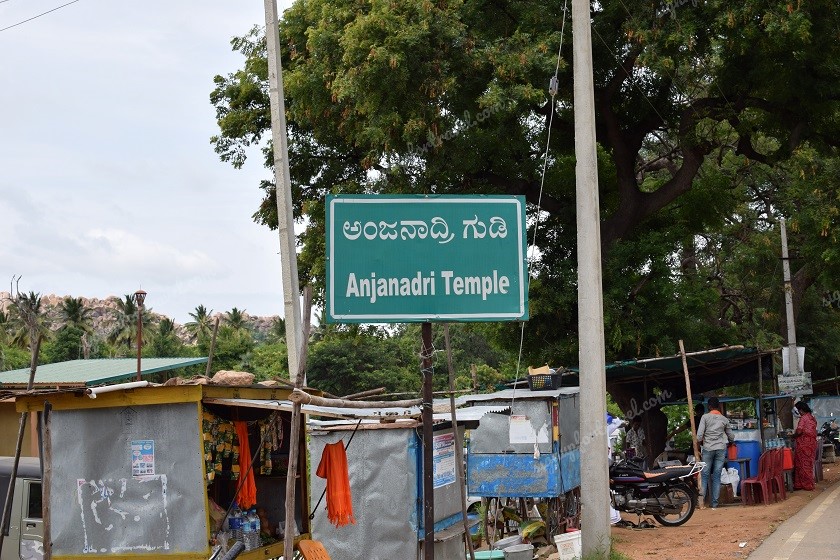
There are several shops even before entering the temple complex selling refreshments, prasad and other items. Then there is a big gate through which you enter the complex. There are a bunch of shops inside the gate as well selling similar stuff to that we saw outside. As this is a significant place for Hindus, there were quite a several people around.
If you had read our Day 2 blog, we mentioned the rain in the evening. All of the leftover clouds were gone in that fall and we were left with clear skies during the day. The result was a very warm and uncomfortable day, not an ideal one to roam around but still, it had to be done.
4. Anjanadri hills and temple – The climb and at the top
There are supposed to be close to 600 steps to reach the temple at the top. Many of the locals prefer to leave their footwear at the base of the hill though it is not mandatory to do so. We wore ours to the top and took them off before we entered the premises. At the start, the thought of 600 steps seemed daunting but we managed to reach the top in about 30 minutes. Guess, we got the extra strength by chanting “Jai Shree Ram” and “Jai Hanuman” along with other devotees.
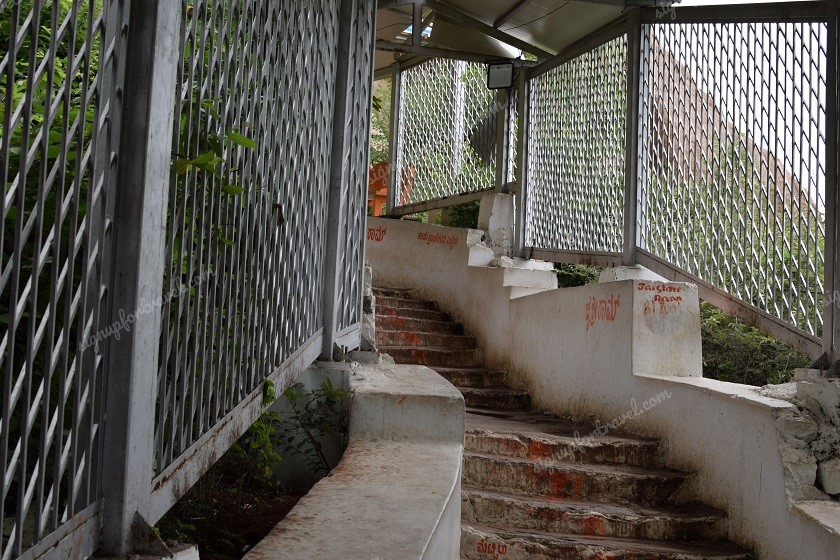
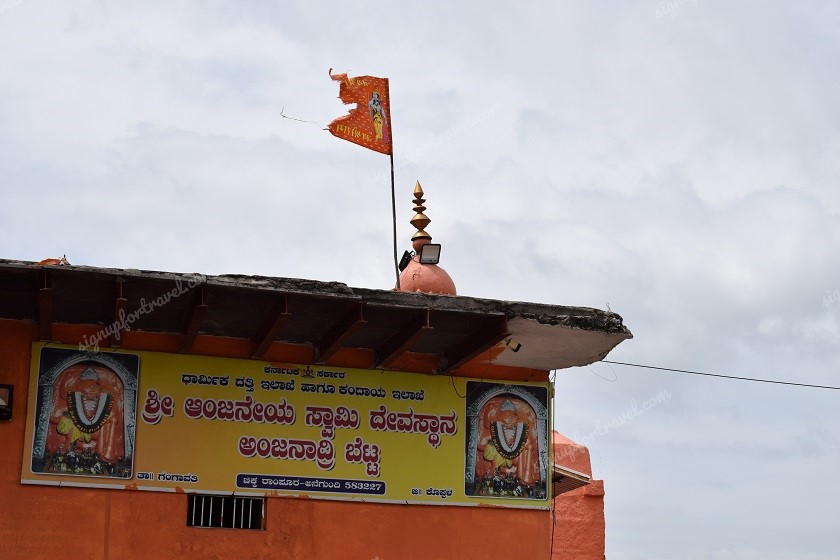
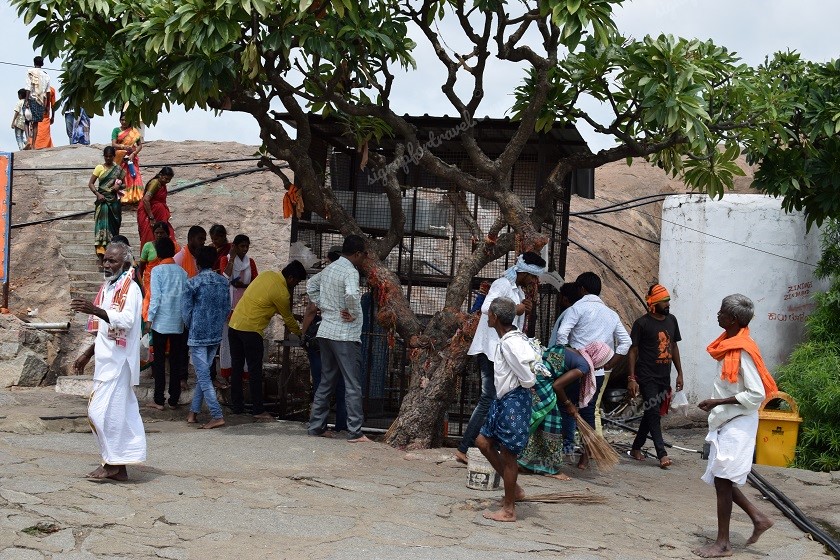
A viewing area at the top has glass barricades and gives a very good view of the surroundings.
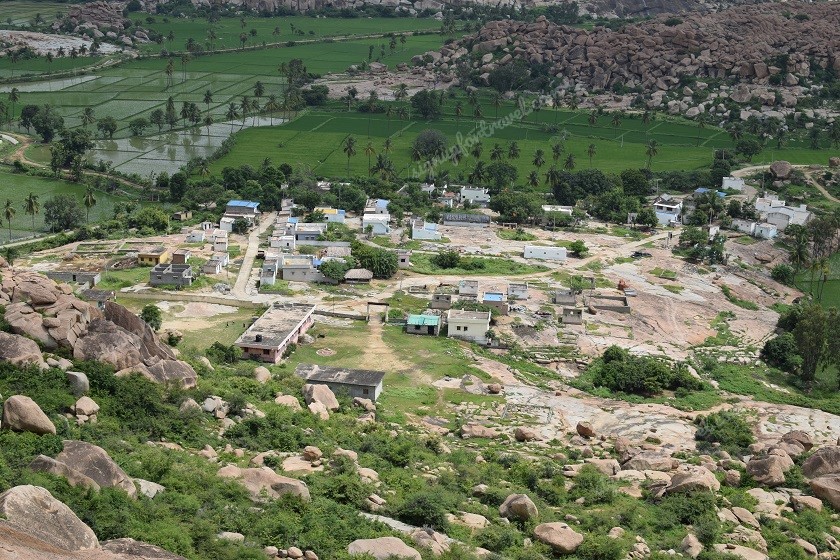
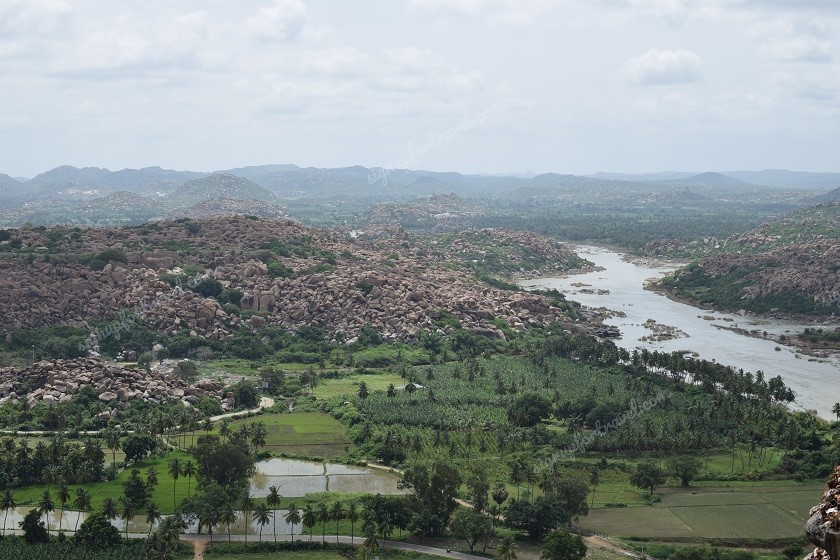
We spent some time at the top and then came back down with the clock showing 11.30 AM.
5. Sanapur lake
The distance from Anjanadri hill to the lake is roughly 6 km. We rode ahead on the same road and reached Sanapur after a few minutes, from there a right turn takes you to the lake and a left turn to the waterfall.
We took a right turn at this point and the village landscape magically transformed into a watery one. Technically, this is a canal of the Tungabhadra river feeding into a power plant ahead. The road along the reservoir is not a proper tarmac one and we rode further until we saw a sign of a temple (Sri Vani Bhadreshwar) 8.7 km ahead and decided not to venture any further. We saw signboards of the area being an animal sanctuary and the presence of leopards and bears. The views were amazing though the hot afternoon made it less enjoyable.
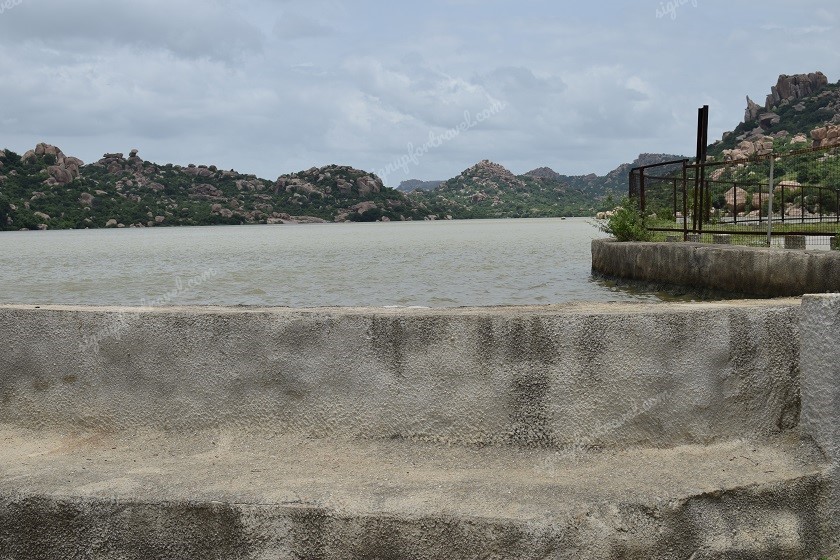
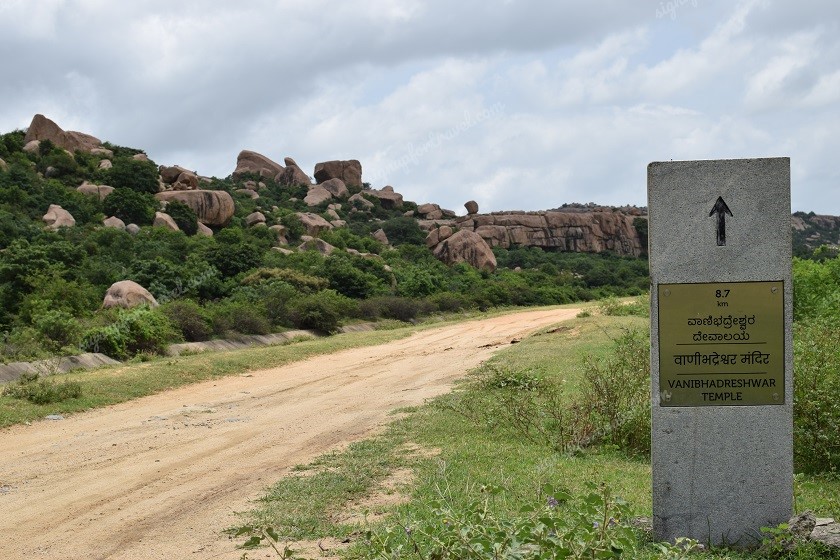
This lake is also a place where the famous Coracle boat rides happen. A coracle is a small round-shaped boat and is quite famous in this area. The monsoon season is not a time for such rides as it can turn dangerous with heavy currents in the river. So, we did not see much, nor did we attempt to do so ourselves.
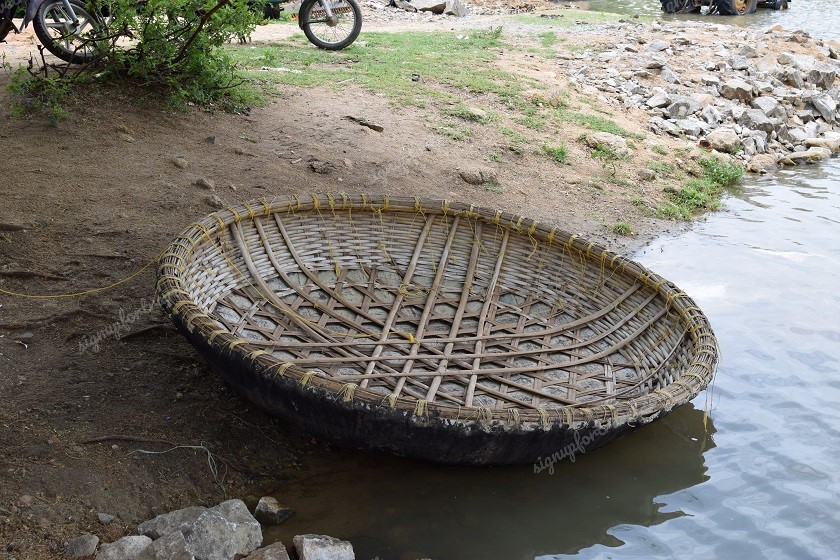
We would have stayed there for around 15 minutes as there was nobody around and nothing much to do.
6. Sanapur waterfall (or not)
Our next stop was the Sanapur waterfall. We again reached the crossroad and went in the opposite direction for about a kilometre to reach the starting point of the fall. We can only go up to a certain point on this road and have to cover the remaining few metres on foot. So, we parked our bike (no designated area) and walked the remaining part to the fall.
We found this place to be isolated as well (barring a few college students looking for privacy) and extremely dirty. To begin with, there is no waterfall as such, it is just the view of the river flowing at a height of a foot or two through rocks. Being in the midst of the rainy season, the flow of the water was a lot. We also spotted coracle boats at the starting point which means that this is also a boating spot in the peak season. All in all, the experience was not good, and this could be given a miss if short on time.
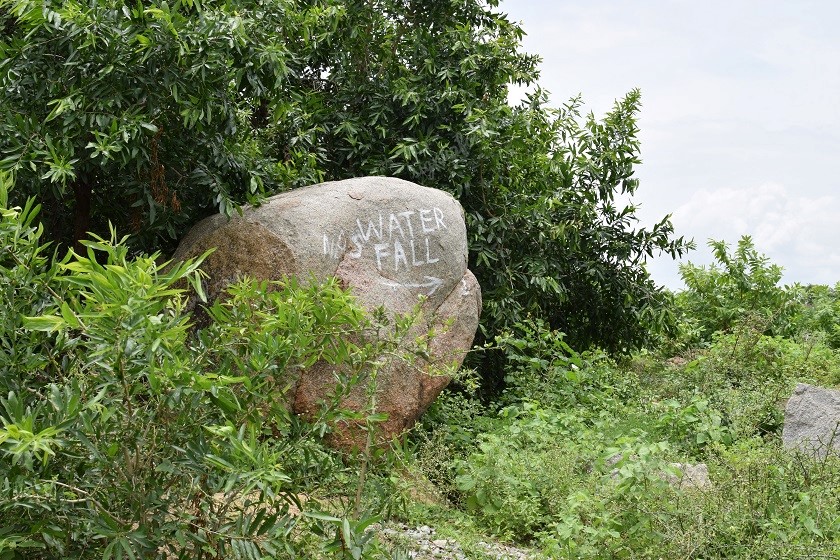
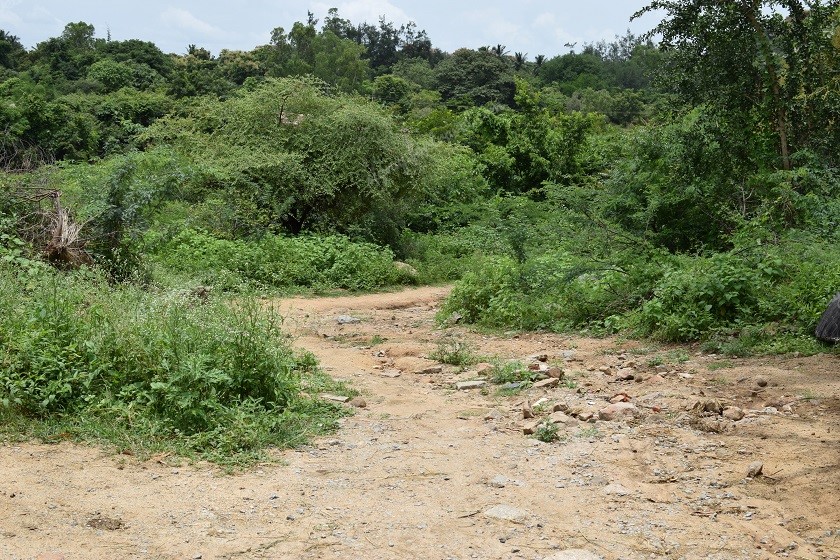
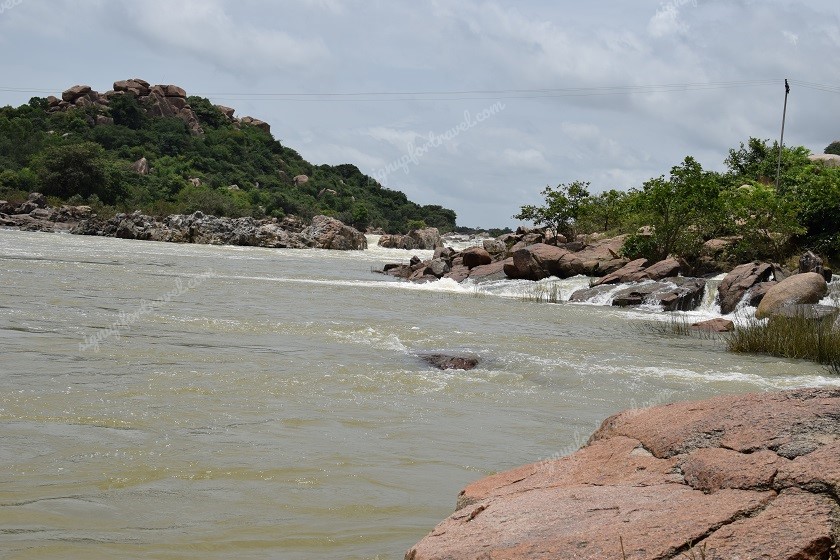
7. Pampa sarovar
We retreated the same way and crossed the Anjanadri hill to take a detour for the Pampa Sarovar. The time was 1 PM. This is a square-shaped tank situated in Anegondi. According to legends, Pampadevi, daughter of Brahma was in deep meditation on the banks of the tank to get married to Lord Shiva and hence the name.
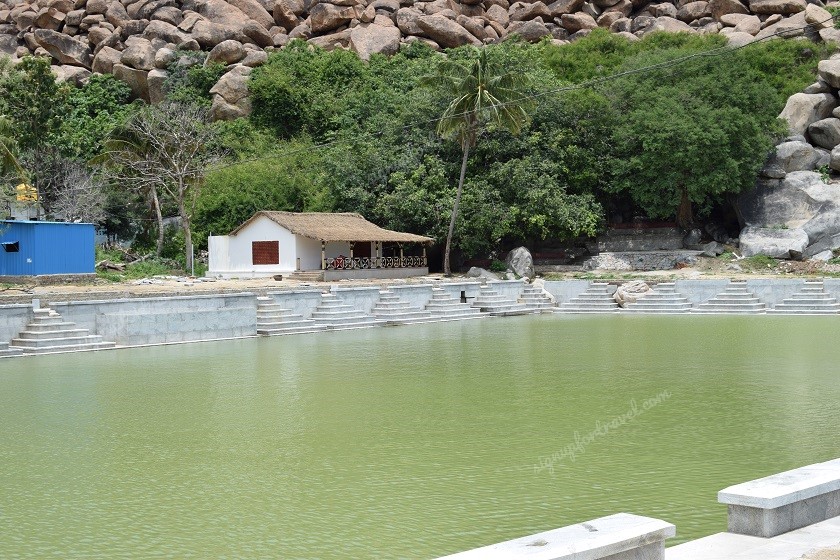
We saw some warning signs of crocodiles but wondered how they could be in a tank.
8. Durgadevi temple
We moved ahead and reached the starting gate of Durgadevi temple at around 1.15 PM. Once you enter the gate, you can take your vehicle further till you reach a parking area. We parked the bike and covered the remaining uphill climb to the temple on foot. It is a short climb uphill to reach various temples situated within the complex. Some of them are dedicated to Hanuman, Shiva, Ganesha, Navagraha and Durga. The main temple of Durga was under renovation, so we visited other temples.
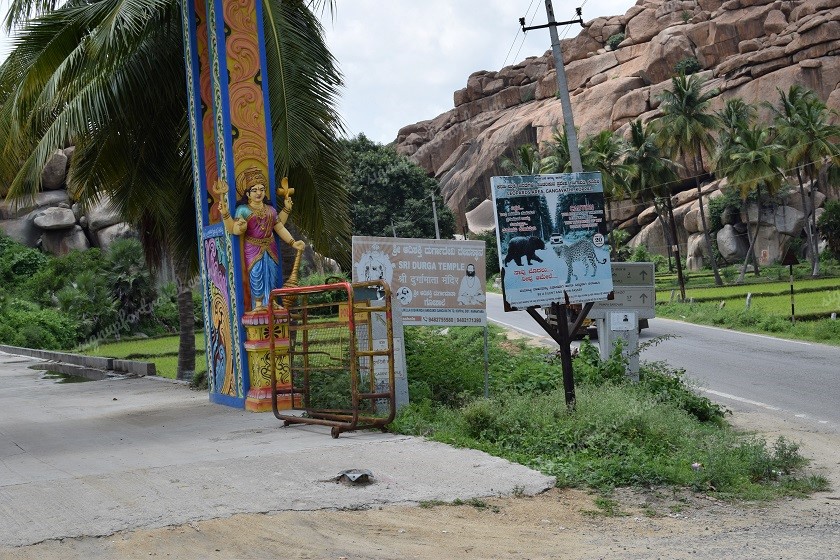
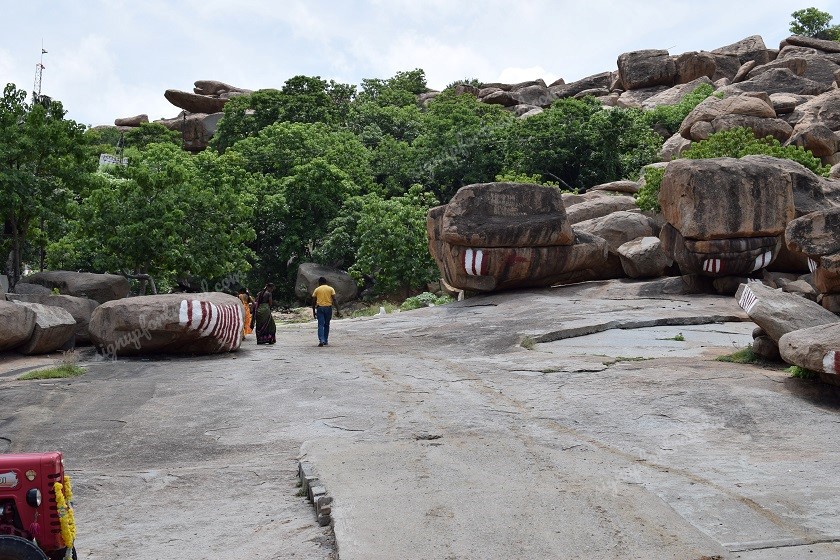
There are several temples inside the single complex which is not apparent when you look from below the hill.
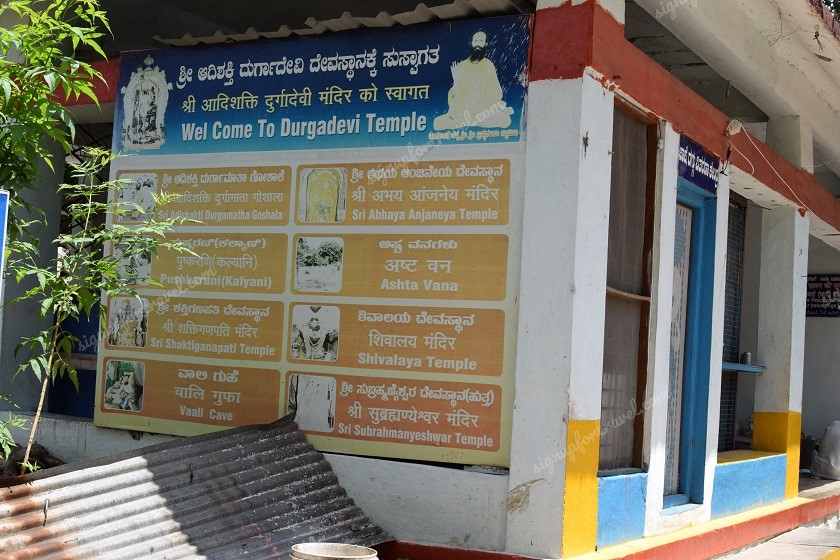
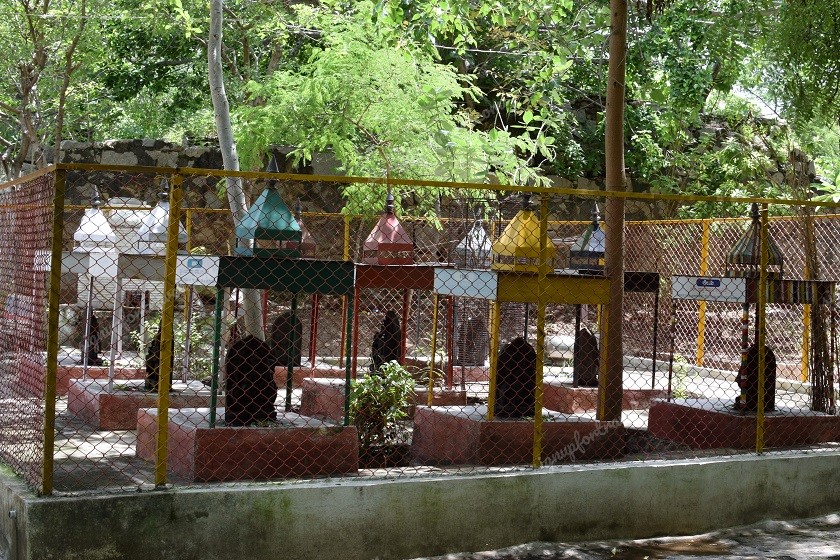
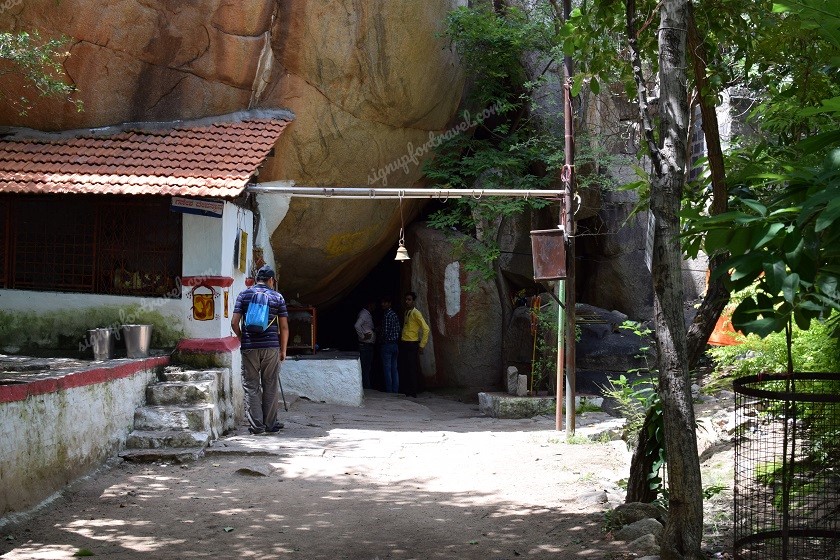
9. The no drama lunch
The time was almost 2 PM when we came down from the hill. The heat was getting on to us as we had done quite a bit of exploring and the time was apt to take a break for lunch. We reached Kamalapura junction and headed further towards Hospet hoping to find a better place to eat (after the fiasco on Day 2). We came across a Hotel Varsha which seemed decent enough, so we went inside. There were two seating areas, one where you sit on the floor (cushion) and the other is a proper area with chairs and tables. We opted for the latter and settled in. We ordered south Indian thalis, and it tasted really good. The time was 3.30 PM when we finished our lunch.
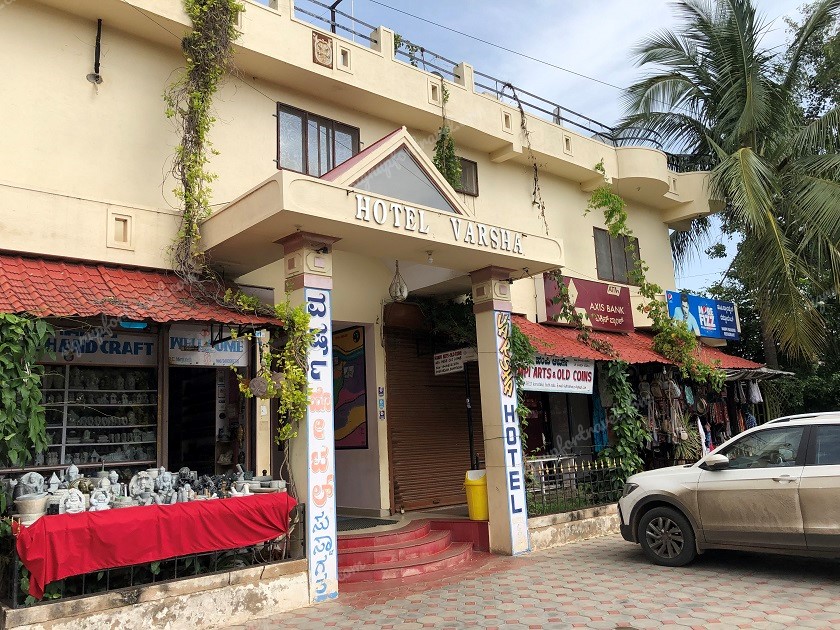
10. Post lunch plan
There is a cluster of monuments before one enters the main area of Hampi. If you are coming from Hampi to Hospet then before the Kamalapura junction, you will have to take a left turn to visit this cluster. All these monuments are very close to each other so you can plan to visit them all together.
11. Queen’s bath
The exteriors of the building were not in a good condition, only the lawns seemed to be maintained. There is a square bath area inside the building. There are multiple entrances though only one was open to the public at the time of our visit.
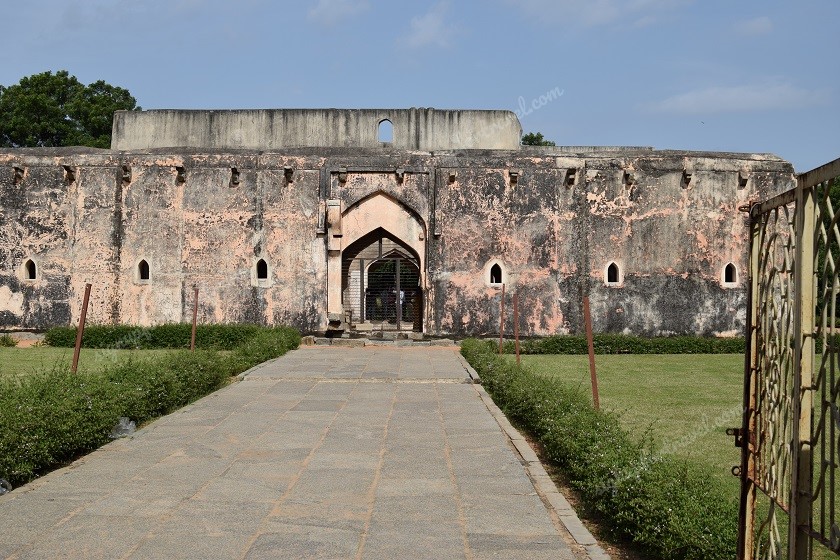
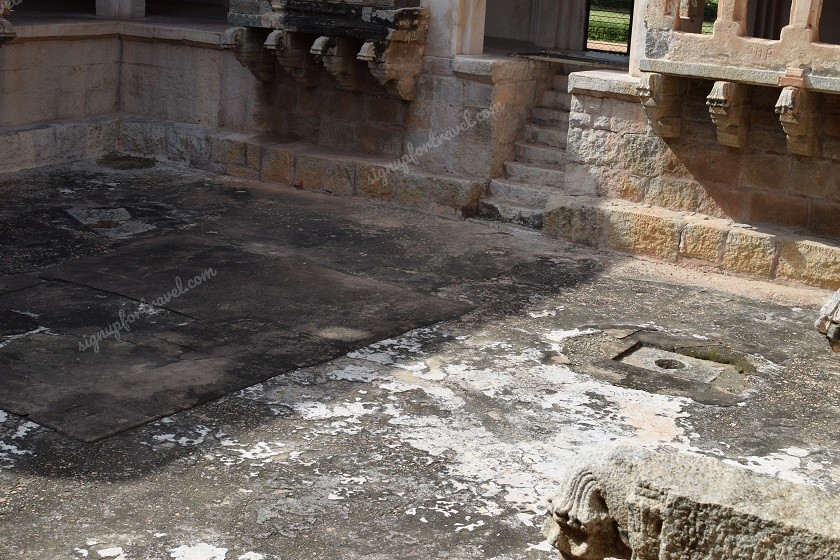
12. Royal enclosure
As we moved ahead on this unpaved road, the next place of interest was the Royal enclosure. There is a huge open area once you enter this enclosure. This was supposed to house many monuments however only a few of them remain and what you see is just a vast open land. Some of the remnants inside this are the Mahanavami Dibba (raised structure used by the royal family to watch the ten-day-long Dasara festivities), stepped tank, public bath, and King’s audience hall known as “Bhuvana Vijaya”. There were few other structures visible but in extremely poor condition, so we did not go further to explore. Guides are available outside the enclosure if you want to have complete information. We did not opt for one due to a shortage of time (most of these monuments close by 6 PM).
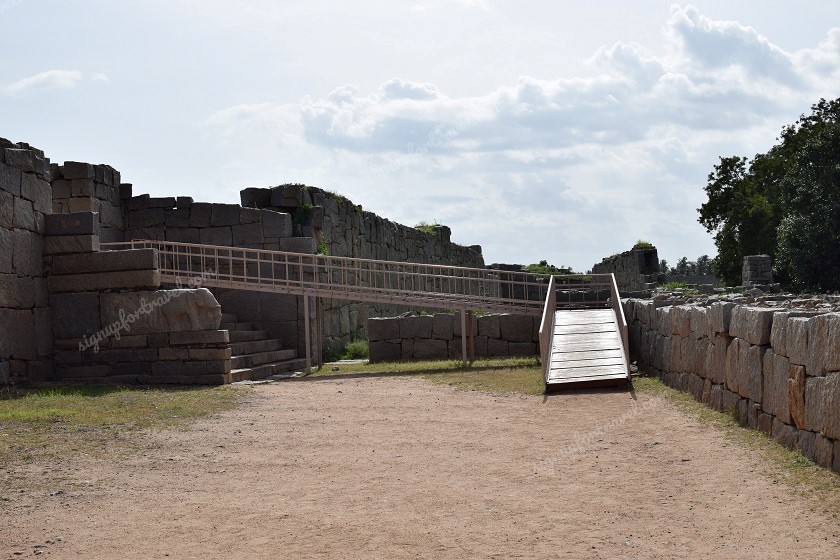
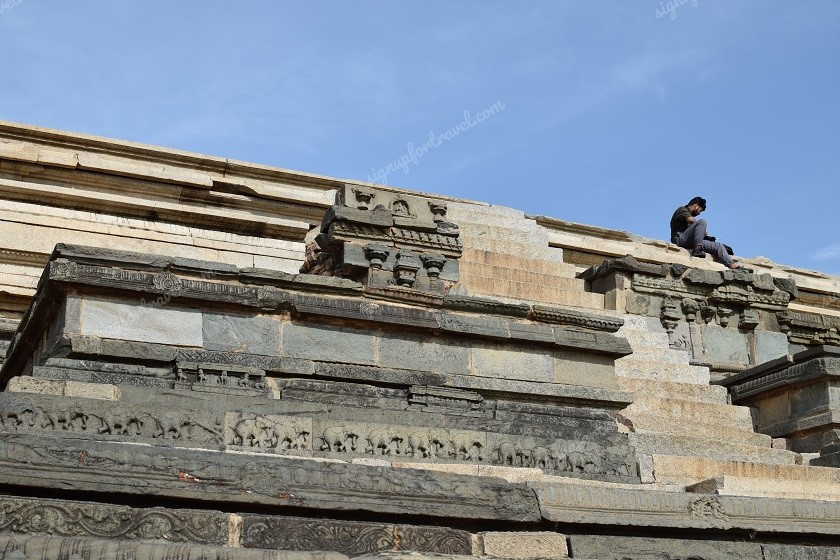
13. Hazara Rama temple
The next one on this road was the temple dedicated to God Vishnu in his avatar of Rama. This temple is well known for its wall depiction of Ramayana and a few episodes of Bhagavata. Hazara means thousand and with so many depictions it has thus got its name.
The temple is beautiful and extremely meaningful if one has the time to view the depictions on the walls carefully.
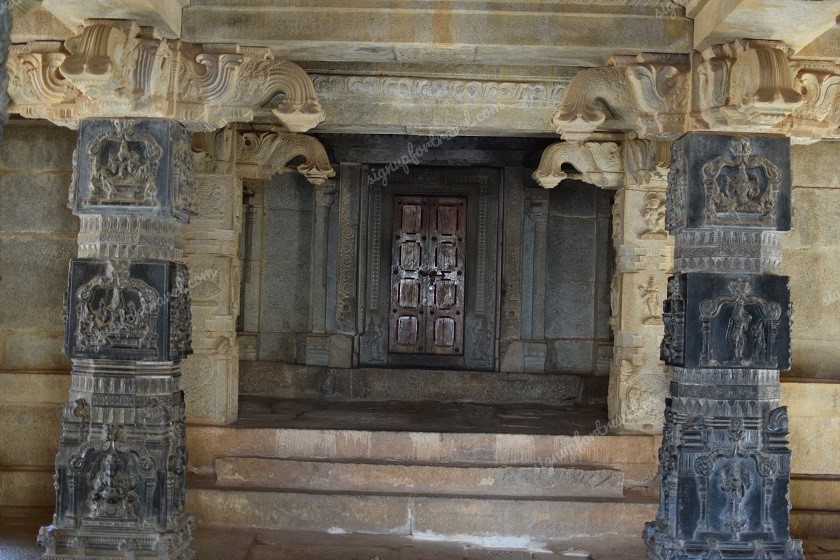
14. Other places of note
There were a few other places of interest we visited which included the Lotus Mahal (the shape of a lotus in Indo-Islamic style of architecture), the Elephant’s stable (elephants used in royal duties were kept in eleven chambers), Parshwanatha temple (dedicated to 23rd Tirthankara of Jaina faith) and Ranga temple. We found the structures in extremely poor condition, especially the temples where only the pillars stood. There is also an archaeological museum to visit but as said earlier all these monuments and museums which are managed by the ASI close down by 6 PM.
15. Closing Day 3
The time was almost 5.40 PM when we exited the last of the monument. After soaking in the atmosphere around us, it was time to call it a day and head back to our guest house. We had dinner at around 8.30 PM which consisted of uttapams.
This was supposed to be our last day at Hampi, it is always a sombre mood on the last day. There was still so much to see in Hampi but then we were glad to have covered the important places, or did we?
Well, no, there was one place that we could not do, and that was the mighty Matanga hill. This was on the back of our minds; how could we miss this important place?
We made a tentative plan of hiking up the hill the next morning but then we had to ride to our next destination as well. So, were we able to do it or not? Read Day 4 blog to know.
We hope you enjoyed reading our day 3 experience. Day 4 coming up….

